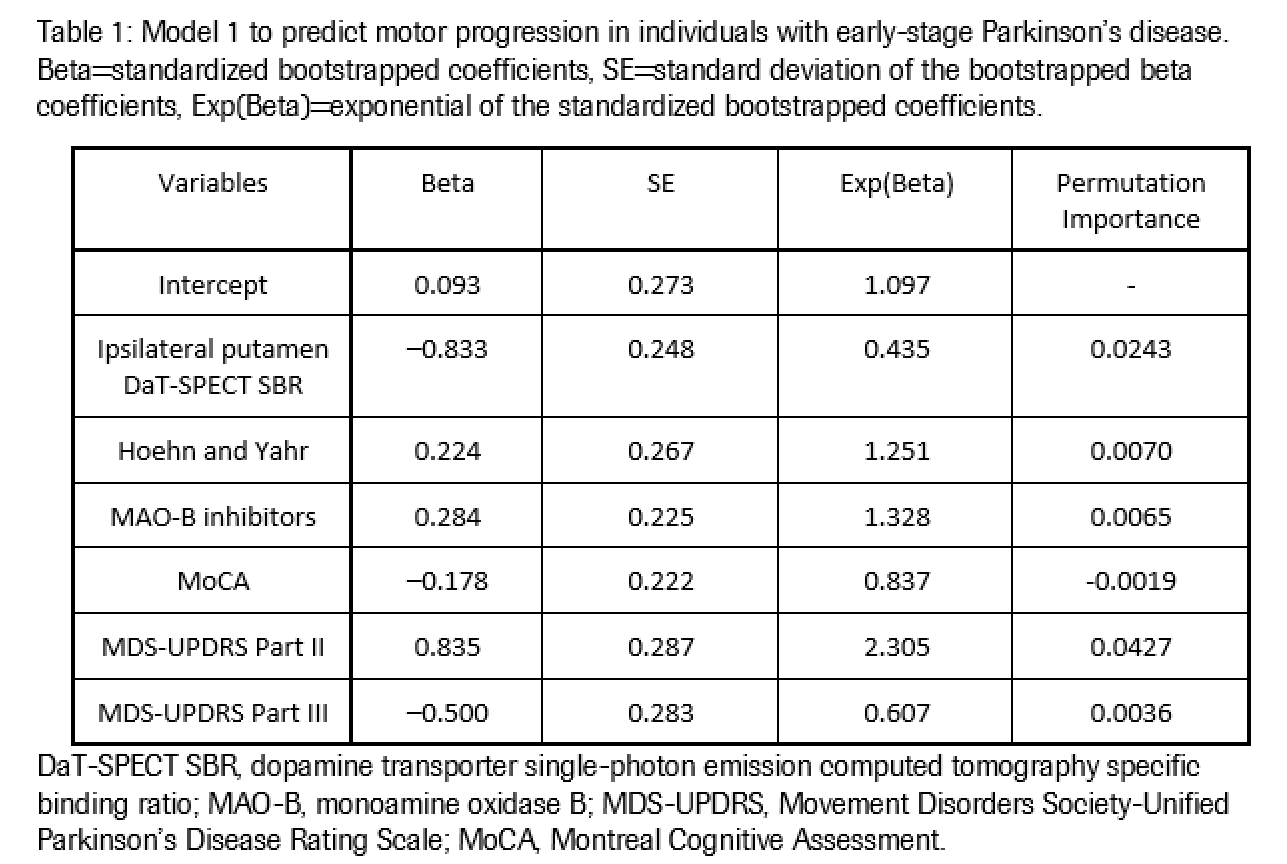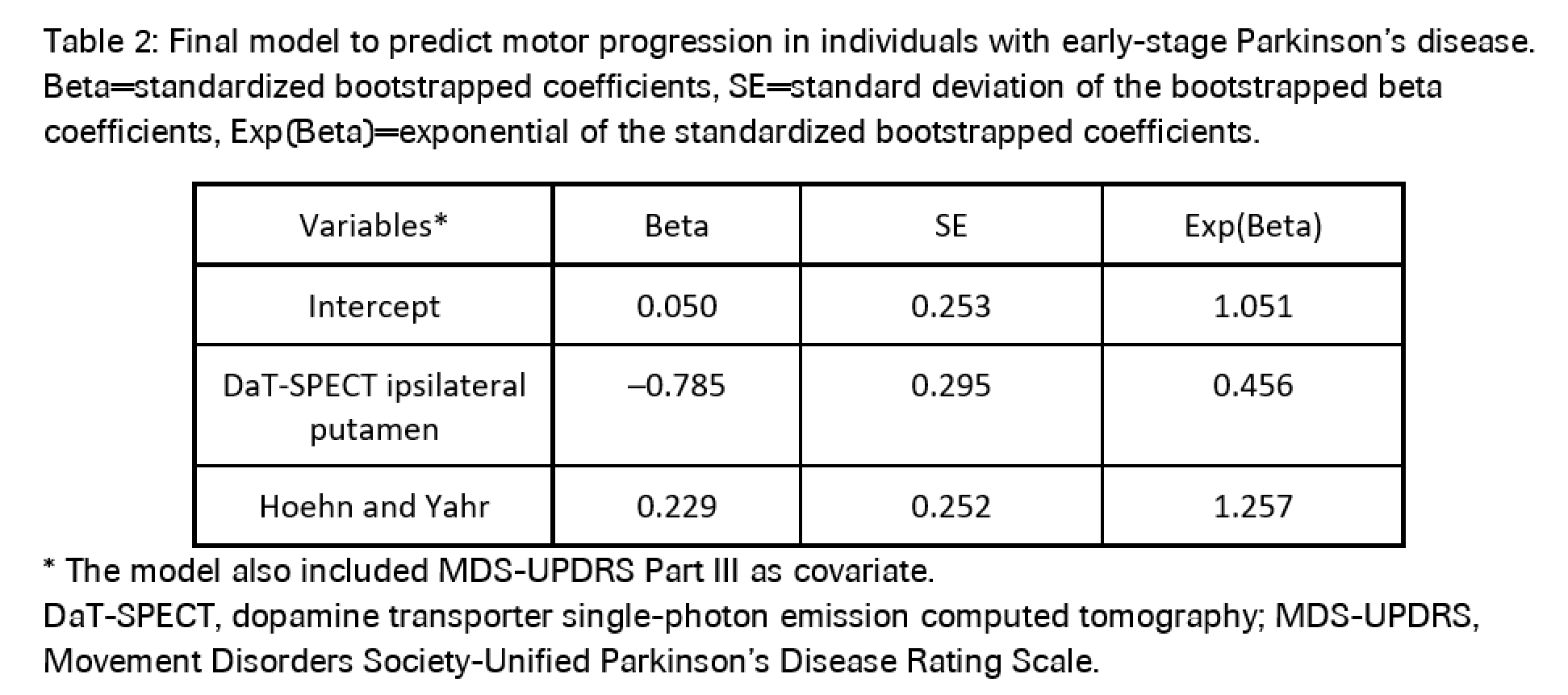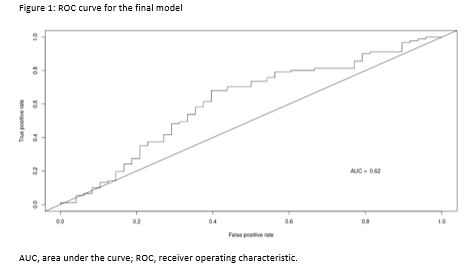Category: Parkinson’s Disease: Clinical Trials
Objective: To identify predictors of motor progression in individuals with early Parkinson’s disease (PD), who are either untreated or treated with monoamine oxidase B (MAO-B) inhibitors.
Background: No treatments today slow disease progression in PD. A challenge in PD drug development is PD’s slow and heterogeneous progression. Thus, variables which robustly predict fast clinical decline must be identified.
Method: Prediction models of motor progression were developed in 76 participants who had not started symptomatic therapy, enrolled in the placebo arm of the Phase II PASADENA Part 1 study. These models were validated in 139 demographically and clinically matched Parkinson’s Progression Markers Initiative (PPMI) participants. Motor progression was defined using a clinically significant threshold, i.e. ≥5-point increase in Movement Disorders Society-Unified PD Rating Scale (MDS-UPDRS) Part III.
Ridge Logistic regression and bootstrap generated the prediction models. The baseline predictor variables for Model 1 (Table 1) were selected within the PASADENA subgroup based on their ability to differentiate non-progressors from progressors and included baseline: Montreal Cognitive Assessment, MDS-UPDRS Part II, Hoehn and Yahr Stage, use of MAO-B inhibitors at baseline, and dopamine transporter single-photon emission computed tomography specific binding ratios (DaT-SPECT SBR) in putamen ipsilateral to side of motor symptom onset. All models included MDS-UPDRS Part III score at baseline, as covariate.
Random forest permutation importance ranked each variable’s predictive strength. A series of models, with several combinations of the key variables, were assessed with the progressor predictive value (PPV), non-progressor predictive value (NPV) and total predictive value (TPV). The model with the best mean of PPV, NPV and TPV was chosen as the final model.
Results: The final model (Table 2) with the best predictive accuracy (Table 3) based on PPV, NPV, TPV and joint largest area under the receiver operating characteristic curve (Figure 1) included the following predictors: Ipsilateral putamen DaT-SPECT SBR, Hoehn and Yahr Stage and MDS-UPDRS Part III.
Conclusion: DaT-SPECT and Hoehn and Yahr Stage were the strongest predictors of motor progression in early PD. Thus, these variables may be used as an enrichment factor to enroll fast-progressing patients in clinical trials.
To cite this abstract in AMA style:
H. Jackson, J. Anzures-Cabrera, K. Taylor, G. Pagano. Disease stage and nigrostriatal integrity predict motor progression in individuals with early Parkinson’s disease [abstract]. Mov Disord. 2021; 36 (suppl 1). https://www.mdsabstracts.org/abstract/disease-stage-and-nigrostriatal-integrity-predict-motor-progression-in-individuals-with-early-parkinsons-disease/. Accessed January 2, 2026.« Back to MDS Virtual Congress 2021
MDS Abstracts - https://www.mdsabstracts.org/abstract/disease-stage-and-nigrostriatal-integrity-predict-motor-progression-in-individuals-with-early-parkinsons-disease/




